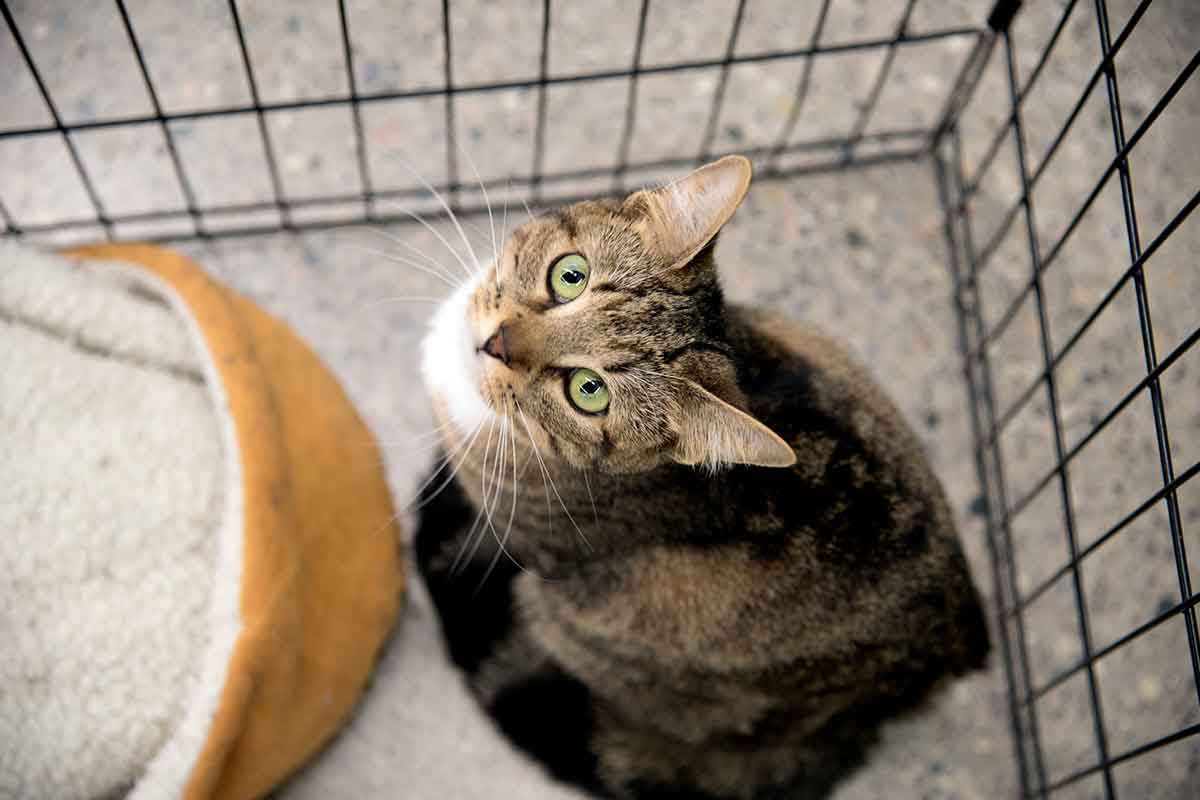Who doesn’t love a kitten? Kittens are cute, cuddly and funny. Most people who are thinking of adopting a cat usually have a kitten in mind, but we at Fear Free have a proposition for you to consider: An adult cat can be a better bet.
When you bring home an adult cat, the acronym WYSIWYG applies: what you see is what you get. That’s a good thing if you don’t want any surprises when it comes to personality or activity level. A kitten is an unknown quantity in those respects. Adult cats need less supervision than kittens, and they are less likely to engage in destructive play. And in shelter terms, the word “adult” typically means 2 years and older, so you’ll still get plenty of mileage from one of these cats.
Finally, while they often have many great qualities and can be just as playful, sweet and cute as kittens, adult cats in shelters are at greater risk. Approximately 70 percent of the cats who wind up in animal shelters each year are euthanized. The vast majority of these unwanted cats are adults. Giving one a home is a boon for him, and we bet you’ll find that it’s also a gift to yourself.
If you decide to seek out an adult shelter cat as your newest family member, we have some tips to help you, your family, and your cat succeed in this new relationship.
- Look past the fear. While some cats are able to cope with the sights, sounds and smells of an animal shelter, many experience considerable fear in this environment. Keep this in mind when deciding which cat to adopt. Just because a cat is timid and withdrawn at the shelter doesn’t mean that same cat won’t be outgoing and affectionate after you take him home and give him time to settle in.
- Take your new cat to the vet. Before putting them up for adoption, many shelters test cats for two serious and potentially fatal communicable diseases, feline leukemia virus (FeLV) and feline immunodeficiency virus (FIV). If the shelter from which you are adopting does not test for these illnesses, take your cat to a veterinarian to be tested before allowing her to share a litter box or have contact with other cats in your home. As part of a regular exam, the vet will also check your cat for fleas, ticks and mites. If your cat shows signs of illness, such as runny eyes, sneezing, or diarrhea, separate her from the other cats in your home until she is treated and has a clean bill of health.
- Confine your cat. To ease your cat’s stress and help her adjust to her new home, confine her to one room of the house for a week or more, depending on how she is coping. Spend time with her in this room, where you can bond with her and reassure her that she’s in a safe place. If you have other animals in the house, keeping your cat in a separate room will give the other pets a chance to get used to the new cat’s scent and the idea that there’s a new pet in the house.
- Keep your new cat indoors. That’s the best way to keep her safe from disease, parasites, being hit by a car, or getting in a fight with another cat or a wild animal. If you want her to be able to go outdoors, consider building her a “catio” or installing “cat fencing” so she can’t leave the safety of your yard. If you plan to allow her to go outside in an unconfined space, wait at least a month before giving her outdoor access. She needs to be bonded to you and comfortable in your home before she’s given freedom to go outdoors.
- Use toys and catnip. Playing with your new cat is a great way to help her relax and bond with you. Wand toys are irresistible to most cats and can foster playfulness in even the most reserved cat. Catnip is also a great way to help your cat unwind. While some cats don’t react to catnip, the ones who do loosen up and become more playful. Sprinkle some dried catnip on the floor near your new cat to see how she reacts.
- Be patient. Cats adjust slowly to change. Your new cat may react to her new situation by hiding or refusing to eat if you are in the room. Spend time with her anyway, talking to her or even reading out loud to her from a book so she can get used to the sound of your voice. Avoid direct eye contact, as that can seem threatening to cats. Play ‘hard to get’ by letting her choose to initiate interactions with you. Give her time to feel safe and begin to trust you. Your patience will eventually pay off in a special relationship with your feline friend.
This article was reviewed/edited by board-certified veterinary behaviorist Dr. Kenneth Martin and/or veterinary technician specialist in behavior Debbie Martin, LVT








